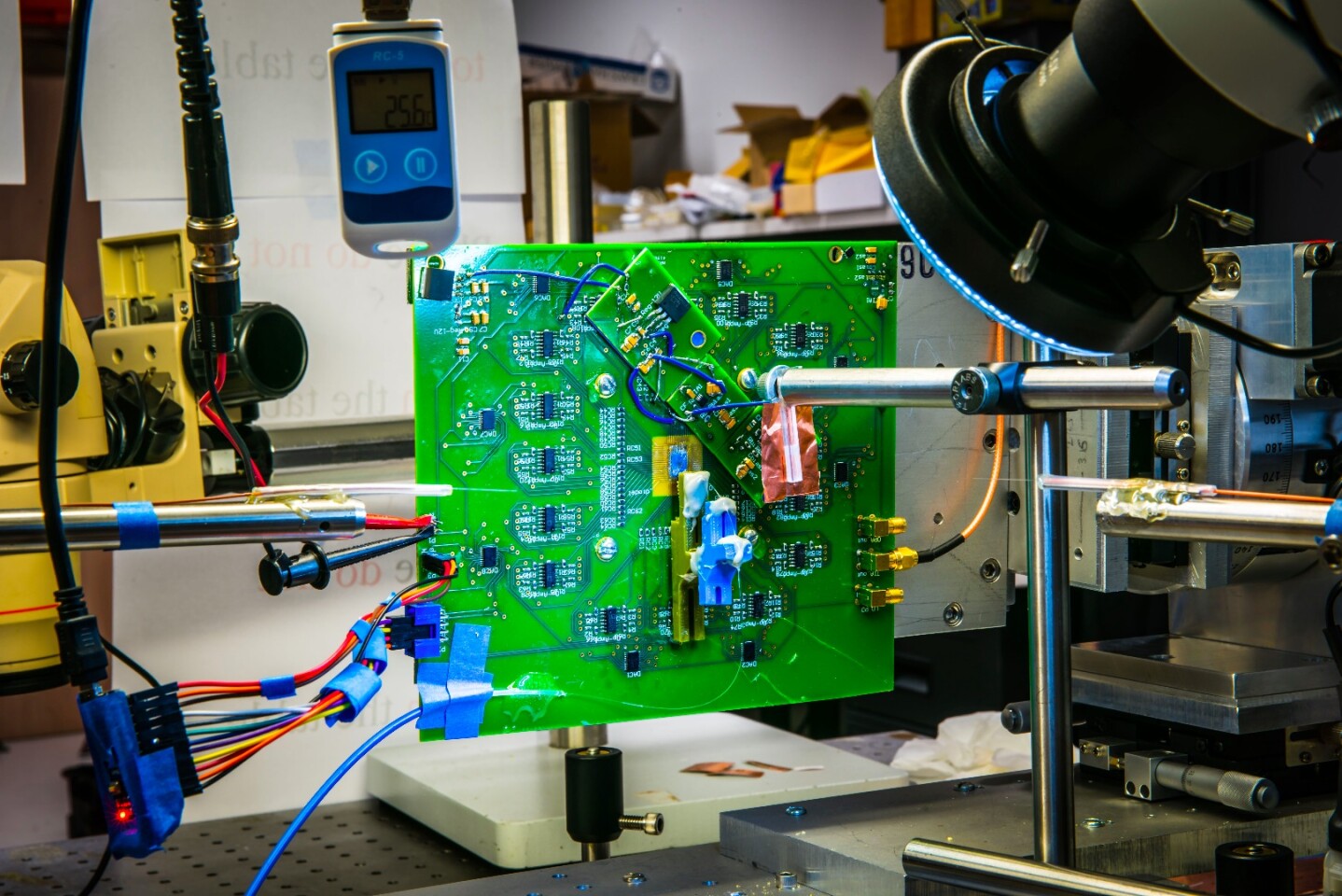While cameras continue to get smaller, using a lens to focus light physically limits this process, even with ultra-thin flat lenses on the way, and explains why so many smartphones have protruding camera bumps. However, researchers at Caltech have now developed a lensless camera which could lead to considerably thinner and flatter imaging devices.
Instead of employing the usual camera pairing of a lens and image sensor, the team at Caltech has used an ultra-thin optical phased array (OPA) which can computationally manipulate incoming light to capture an image. This means the thin layer of integrated silicon photonics can emulate the lens and sensor of a digital camera.

The new camera is said to work using a similar principle to the phased arrays used in wireless communication and radar, where arrays of transmitters send out the same signal as waves, but staggering the timing of transmissions allows them to interfere with each other and amplify the signal in one direction.
In the lensless camera, the array of light receivers can be individually controlled on a tight time delay (or phase shift) as short as a quadrillionth of a second. This allows the camera to selectively look in different directions and focus on different things.
Researchers say that a simple adjustment in the way the array receives light also means the camera can switch from mimicking a fish-eye to a telephoto lens instantaneously. This would eliminate the need for cameras with different lenses to observe different focal lengths.

So far the lensless camera has only been used to recognize basic patterns with its 64 light receivers on a 8 x 8 grid. However, despite the low resolution, the team says the proof of concept offers a fundamental rethinking of camera technology.
While we don't expect to see lensless cameras making their way to consumer devices any time soon, it's suggested that the development could lead to thinner smartphones and smaller cameras, as well as having implications for astronomy by enabling ultra-light, ultra-thin flat telescopes.
The paper – An 8x8 Heterodyne Lens-less OPA Camera – was presented at the Optical Society of America's (OSA) Conference on Lasers and Electro-Optics (CLEO) and published online by the OSA in the OSA Technical Digest.
You can check out a video showing the lensless camera below.
Source: Caltech






